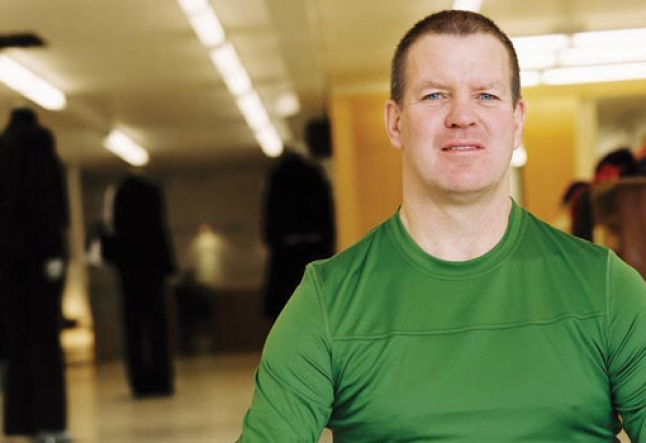Yoga studio owners share secrets of Business Success

Yoga Studios Business & Revenue Model
In yoga sessions, the refrain “Yoga is not about competition” has become ubiquitous. But how do those who operate yoga studios reconcile this ethos with the realities of business?
How can yoga studio owners successfully corner the market and develop a sustainable business plan in the increasingly crowded yoga industry?
It is vital for yoga studio owners to thoroughly analyze their yoga studio income model in order to optimize revenue and maintain the sustainability of their business.
Also Read>>> Tips for Running a Successful Yoga Retreat
The Rise of Yoga Studios
In the last few years, there has been an explosion of yoga studios opening across the country. These fledgling studios are a response to yoga’s surging popularity, with millions of people hitting the mat, according to USA Today.
Competition in the Yoga Industry
Yoga might be booming, but so is competition as eager yoga entrepreneurs saturate the market and divide the pie for student acquisition.
We asked some studio owners to share their secrets of surviving and thriving in today’s market.
Different Business Models for Yoga Studios
There are many different yoga studio business models for running a successful enterprise.
You can run a one-person show, form a partnership with several yoga teachers, go in with only business experience, start a nonprofit, open a franchise like Bikram, or offer a multi-destination studio that includes body care, food, and a retail outlet.
Common Themes Among Successful Yoga Studios
The yoga studio owners interviewed for this article have taken a diverse approach to their yoga business, but they have several things in common.
They agree that word of mouth is the best form of advertising, cite rent as their highest business expense, offer lucrative teacher training programs, and aren’t threatened by competition from other yoga studios or gym yoga classes.
Also Read>>> How to convert your garage into a beautiful Yoga Studio
The Power of Word of Mouth
Ironically, the most effective way to get new clients is through recommendations from current clients, say yoga studio owners.
Because it encourages the formation of community, yoga, in particular, lends itself to the word of mouth, grassroots method of initiating new clients.
The Importance of Client Experience
How then do new or struggling studios encourage word of mouth? By giving their current clients the best yoga experience, atmosphere, and customer service they can.
Taking good care of current clients, focusing on good teaching, and community building will inevitably lead to a buzz of word of mouth advertising, say studio owners.
“Branding a yoga studio is like creating a mission statement about what you are offering to the community, and what makes you unique.”
Yoga Tree’s Example of Success
After so many years, Yoga Tree (bought by Yogaworks in 2014 and now closed), a chain of successful San Francisco yoga studios, is still eliciting new clients in almost every class, mostly through word of mouth.
“In the beginning of class, when we ask first-timers to raise their hands, I am amazed how many hands go up in every class,” says yoga studio owner Tim Dale.
Competition is Not a Threat
The competition from other yoga studios or gym yoga doesn’t threaten Dale. “It seems that every time another yoga studio opens or a gym starts offering yoga, we get busier,” he says. Dale sees the mainstream popularity of yoga as a boon for his business.
Community Building as a Foundation for Success
He owes the success of his hatha–flow style studios to the network of people who helped him get the business off the ground, including his yoga instructor wife, whom he met while opening his first studio.
He also credits his effort to build community among clientele as a foundation of his success.
The Need for Additional Income Streams
For owners of new studios, who have yet to build a community of students, other streams of income may be necessary to keep the business initially afloat.
Aaron Goldberg’s studio in Arizona, Inner Vision Yoga, is greatly subsidized by its teacher training programs.
Teacher Training as a Revenue Stream
Teacher training helps assuage those costs by providing an income potential of $25,000 every three to four months. “In my opinion, you are not going to get very far running a yoga studio without offering teacher training,” Goldberg adds.
The Importance of Branding for Yoga Studios
Twenty-year veteran business coach Alón Sagee (who sold his company to Kristin Abel) has been helping yoga entrepreneurs start and bolster their yoga businesses.
According to him, the secret of successful yoga studios lies in their ability to brand themselves. Proper branding eliminates the pressures of competition as each yoga studio creates its unique market niche.
Bikram Yoga as a Branding Example
An example of a well-established brand in the yoga community is Bikram yoga. With Bikram, people know what they are going to get: an aerobic, vigorous style yoga, done in the same series in a heated room.
Cyndi Weis and Breathe Yoga
Cyndi Weis, owner of Breathe Yoga in Rochester, New York, has unknowingly followed Sagee’s branding advice. Her unique niche is a Baron Baptiste-style yoga studio that is also a multi-purpose destination.
Overcoming Challenges in Opening a Yoga Studio
Opening a yoga studio, like any new business, lends itself to making mistakes through the learning curves, but as long as the business vision and branding are clear, there is a solid foundation, and any mistakes can be overcome, says Sagee.
Embracing Growth and Avoiding Competition
Sagee also says that competition isn’t a necessary component of the yoga business but need to follow the global yoga growth report.
“The secret is to figure out what unique gift you have to offer the world, put it out there, and the people who are meant to will find you,” he adds.




